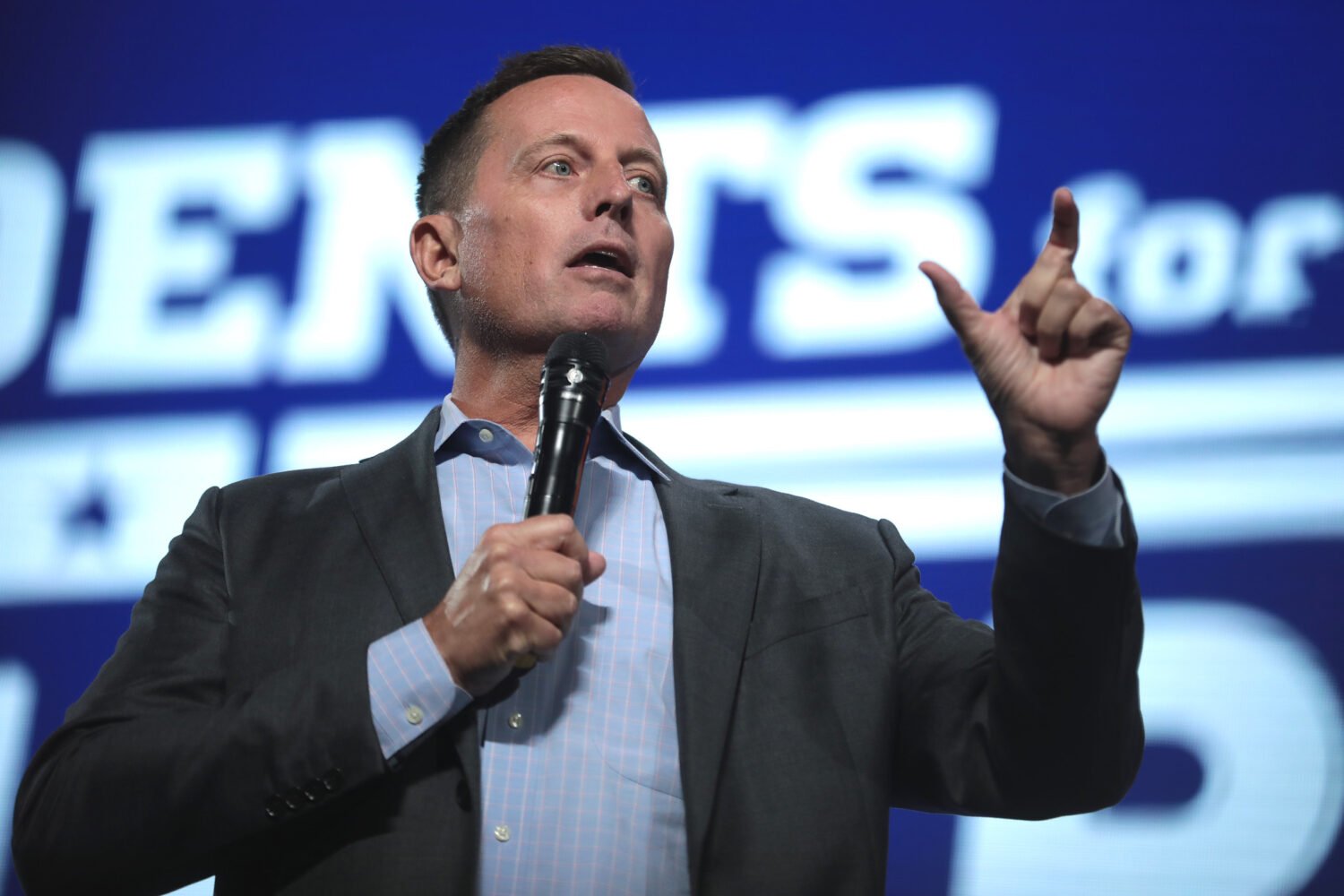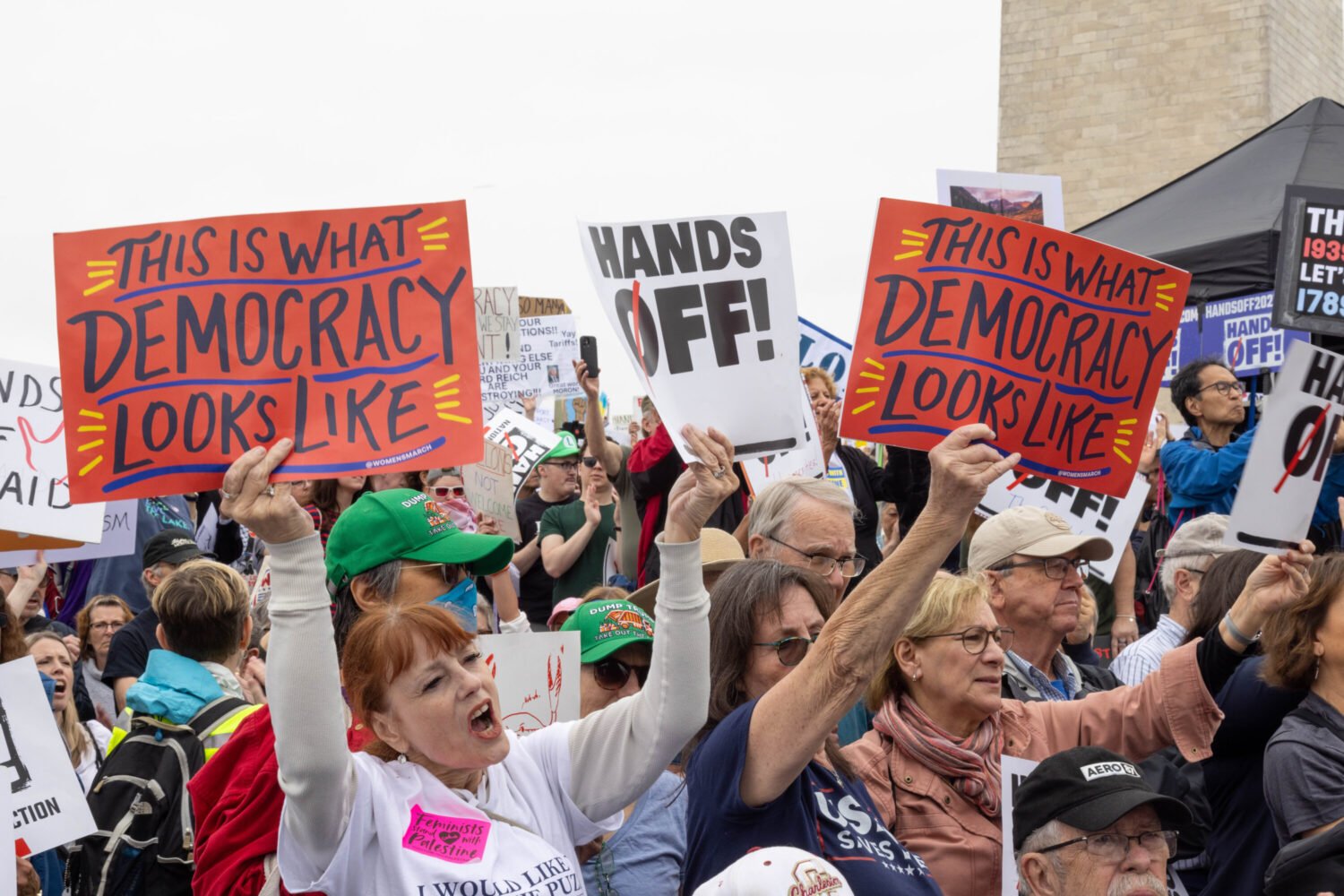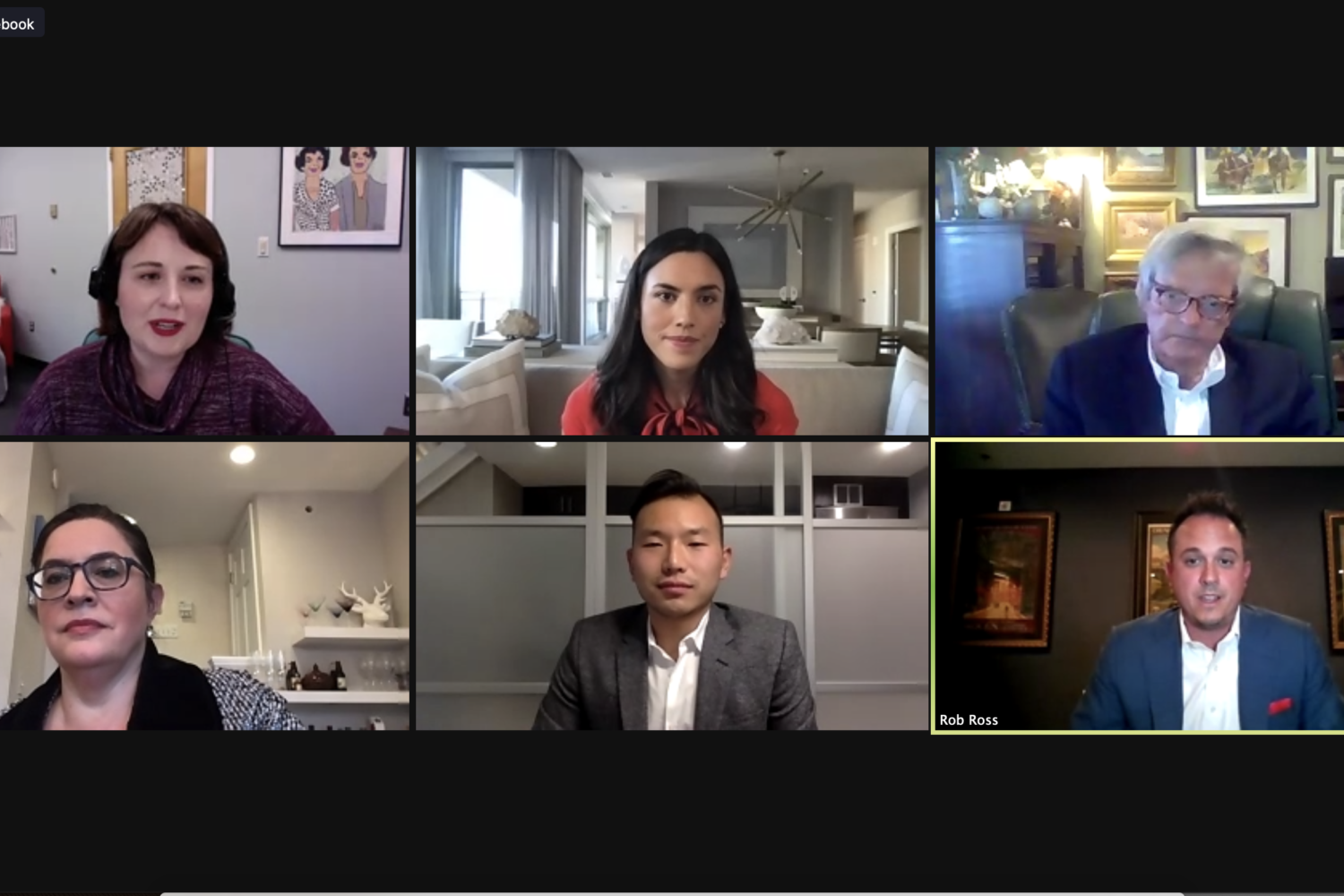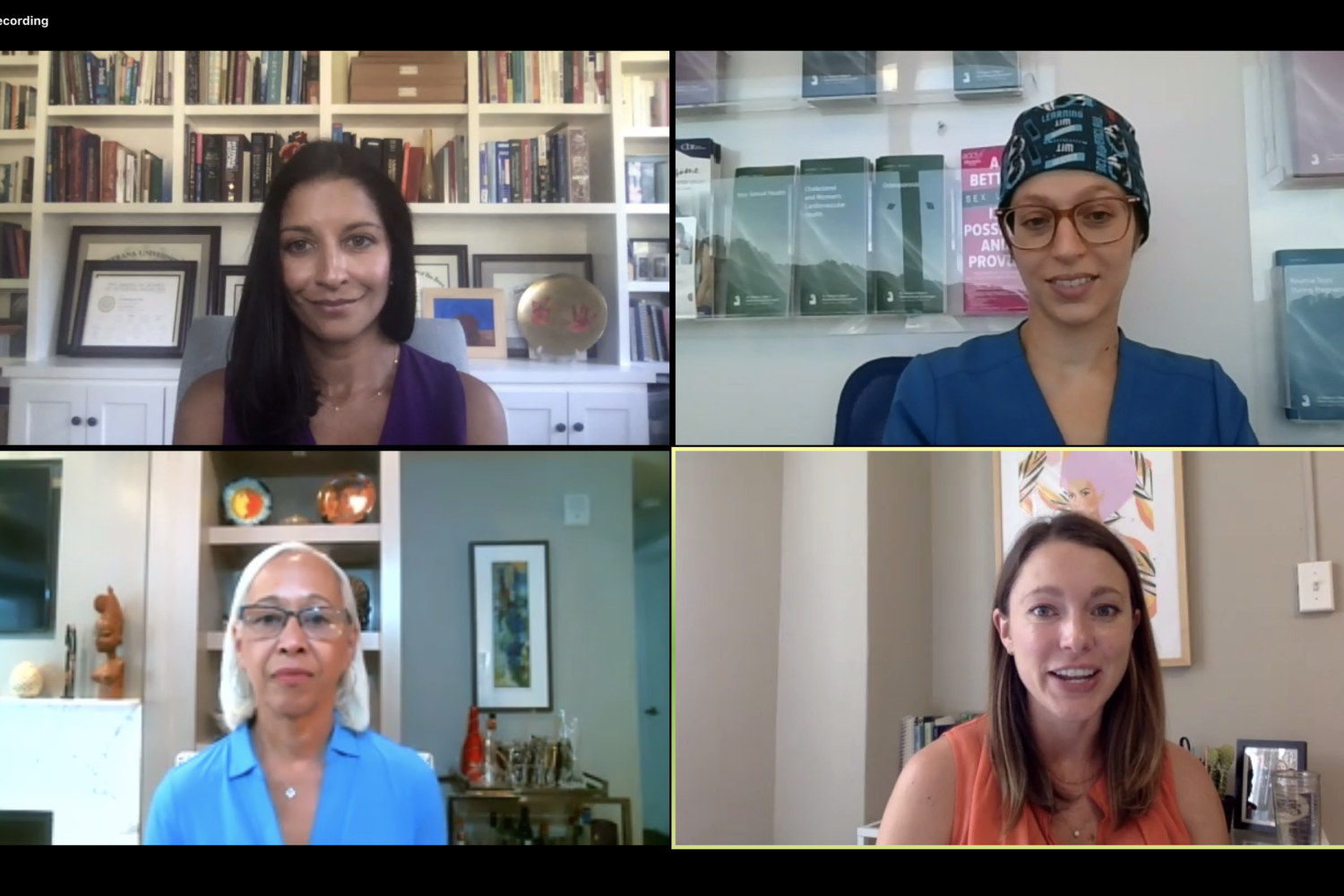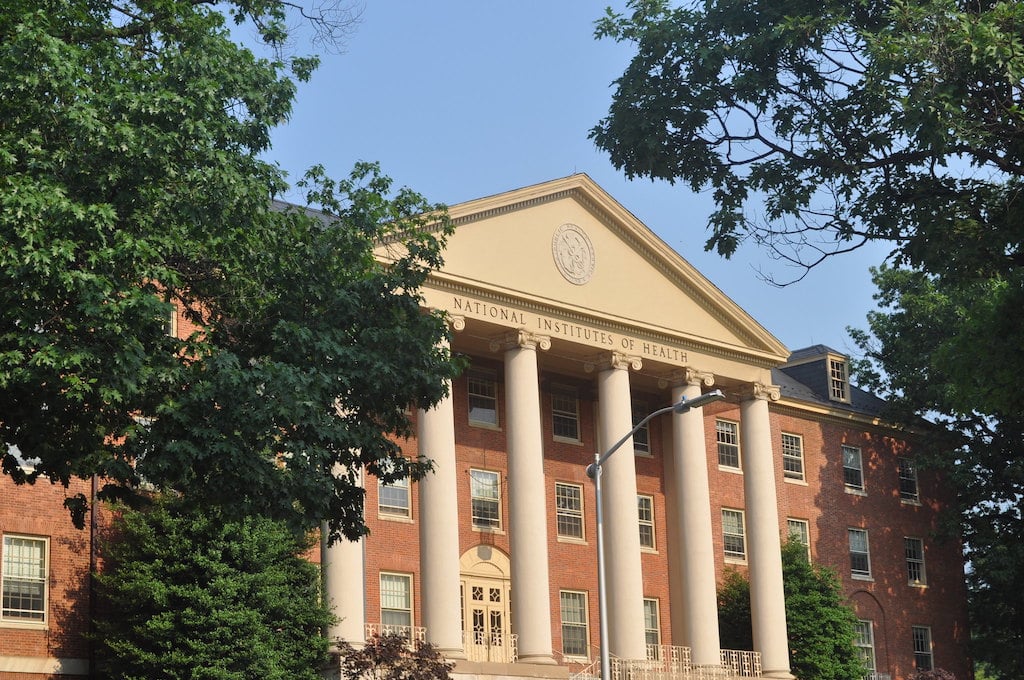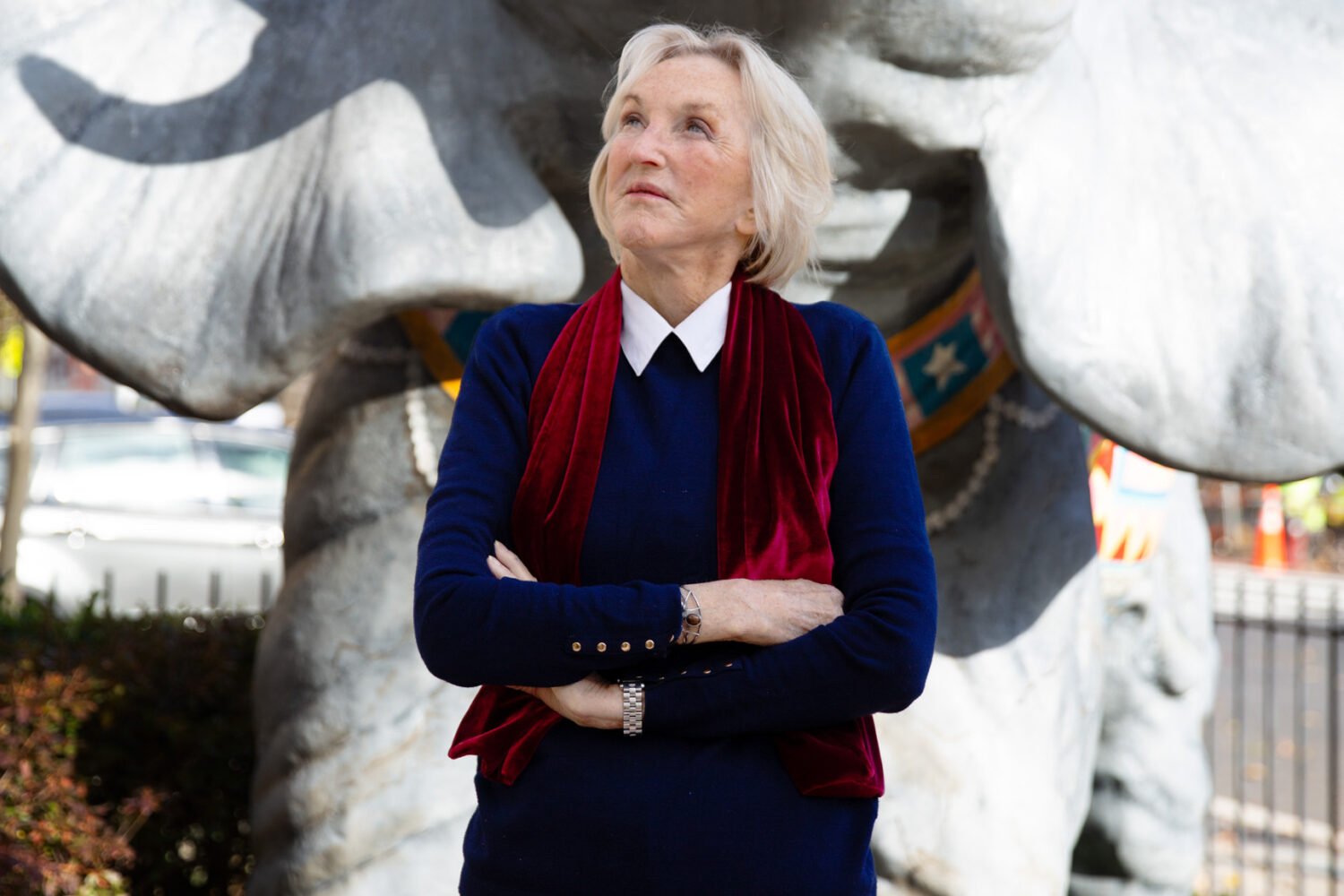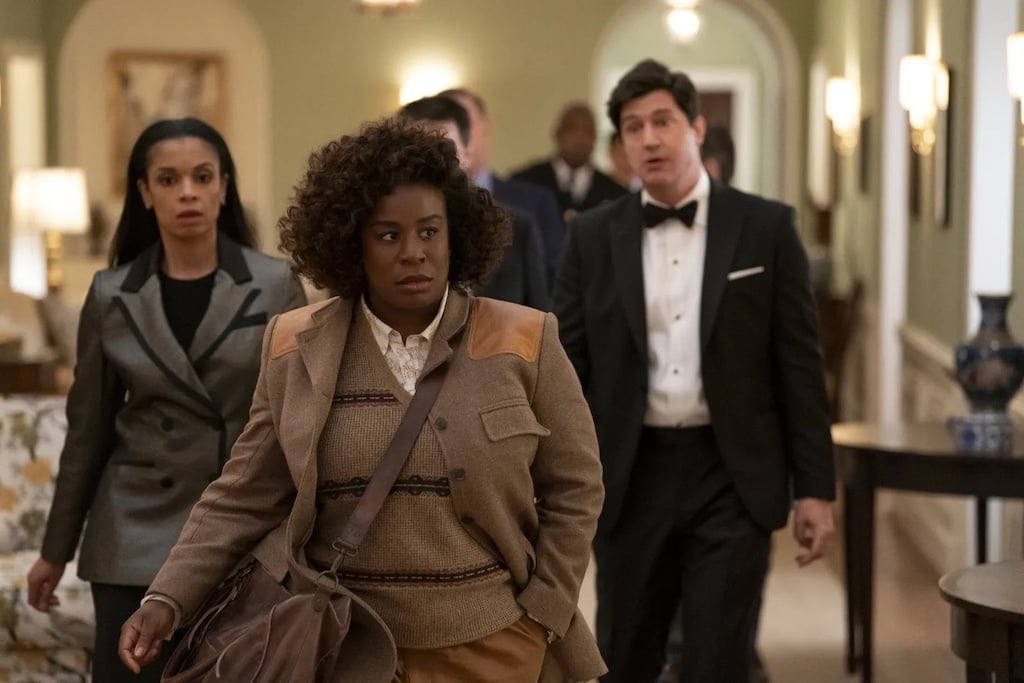See more:
Big Guns: Washington's Top 30 Lawyers
The Best 800 Lawyers
“Washington is probably the only city in the world where people try to make themselves look older,” says 42-year-old Chris Landau of the law firm Kirkland & Ellis. Landau recently argued and won his first case at the United States Supreme Court. Before the argument, he had to meet with his client, whom he’d never seen before.
“The client stared at me and said, ‘You can’t be my Supreme Court lawyer!’ ” Landau says. “It really took the wind out of my sails.”
At many firms, young attorneys get to argue their first cases only when somebody senior to them dies or retires. Says one lawyer who worked at two top firms while in his thirties: “I could never figure it out—senior management was always discouraging entrepreneurship. They wanted things to work like the Senate, where you keep quiet and play the game until you’ve been there a while.”
“Life in a large law firm is a constant battle between greed and ego,” says 40-year-old Alan Fisch, who recently left the DC-based firm Howrey. “If a firm is greedy, they will encourage a young partner. When senior partners feel challenged by younger ones, resentment can reign.”
Landau was lucky. He works for Kirkland & Ellis, one of the top training grounds for young attorneys. One of the youngest partners in the firm’s history was Kenneth Starr, who at 37 became the youngest man ever appointed to the federal appeals court.
At Kirkland, Starr had the self-confidence to assign important work to even younger lawyers. One was Paul Cappuccio, who was named to our first list of best young lawyers eight years ago. Since leaving Kirkland to become general counsel at Time Warner, Cappuccio has carried on the tradition by aiding the careers of another generation of attorneys.
Finding a good mentor in Washington is partly luck, although it doesn’t have to be. The names of partners and firms that foster young talent are known within the business, as are the partners and firms that stifle youthful enthusiasm. Beyond Kirkland & Ellis, young partners are entrusted with important work at WilmerHale, Arnold & Porter, and Gibson, Dunn & Crutcher.
Gibson Dunn partner Ted Olson, who like Starr served as US solicitor general, works to advance the interests of his young partners, promoting them in the press and pushing them for judgeships and other posts. One of Olson’s proteges is Miguel Estrada, whom Olson helped get named to the powerful US Court of Appeals for the DC Circuit. Estrada’s nomination was filibustered and finally withdrawn, but it demonstrated Olson’s commitment to helping talented younger lawyers.
Olson is a political conservative, and many of the attorneys he promotes share his political philosophy. But if he thinks a colleague has talent, that trumps the politics. Ted Boutrous, who has represented many liberal news organizations, is one example.
On the liberal side, WilmerHale’s Jamie Gorelick has advanced the careers of many associates. Like Gibson Dunn, Wilmer is a firm where young lawyers want to be. “Jamie is anxious to go to bat for her kids,” says one protege. “But she is not alone. In my experience, many of the most respected lawyers in town take pride in helping the younger lawyers.”
But every ambitious young lawyer can’t work at Kirkland, Gibson, or Wilmer. Many find their way to government, an increasingly attractive alternative to going straight to work for one of the big law factories. “This is not a place where people stay in the same job for 15, 20, 30 years,” says Olson, who has left Gibson Dunn twice for government servÂice. “There is a high degree of turnover in the interesting jobs, so there are openings all the time.”
Thirty years ago that wasn’t the case. Many of the rich firms looked down on government service. Law-school grads who went to work for the government risked not being able to make the move to more lucrative private practice.
Today government service is seen as invaluable by big-firm Washington managing partners, many of whom have worked in government themselves.
Now talented young lawyers find they can get more courtroom experience in the US Attorney’s office or as a staff lawyer at the Equal Employment Opportunity Commission, the Securities and Exchange Commission, the Federal Trade Commission, or the Patent and Trademark Office than they ever could as a big-firm associate fighting for scraps from a partner.
It’s a long-term view because working for the government reduces an attorney’s income substantially. Assistant attorney general Alice Fisher is one of Washington’s brightest legal stars. Had she stayed in private practice, she would easily be making in the upper six figures. But when she returns to private practice, she’ll quickly make up the deficit. Offers for Fisher are expected to start in the seven-figure range.
“These days,” says Landau, “it helps, not hurts, to have stamped your passport in the government. Otherwise it is hard to break into a top-tier litigation practice.”
They used to say of writers that you have to be published to get published. In litigation, says Landau, it sometimes seems that you have to have experience to get experience. Government provides that.
Casey Cooper, a 39-year-old attorney at prestigious Baker Botts, says private practice also can provide experience: “The trick is to prove your worth—at a lower billing rate—by putting yourself in a position to interact directly with the firm’s clients.”
Says Jen Spaziano, an admitted workaholic who just made partner at Skadden, Arps, “Good work speaks for itself. Somebody might not notice your first good brief, but the third, fourth, or fifth good argument, good presentation, or good pitch, people are going to recognize.”
Another key: Make sure you’re available. The big stars and the senior partners are often tied up in long meetings or power lunches at the Army-Navy Club. While they are busy, Spaziano says, she is at work building a relationship with the client, a regulator, or even opposing counsel. These efforts will be recognized by veteran attorneys, who often are looking for a bit of what made them successful.
Ted Olson says forget the idea of sucking up, joining private clubs, or working brutal hours. “My advice to someone who wants to get ahead is to find interesting and successful people to work for, do a hell of a good job, and from time to time move to something else to broaden your experience and expand your circles of friends, mentors, and colleagues.”
Competence and confidence are found in abundance in our 40 top young lawyers. They were selected on the recommendations of senior partners, lawyers previously on this list, and others. Some are in private practice, some in government. In the decades to come they will probably be leaders of Washington’s most powerful legal institutions.
1. Paul D. Clement, 40 this month. He is history’s second-youngest solicitor general—the most prestigious legal job in the country except for a seat on the Supreme Court. The youngest, Walter J. Cummings Jr., served only about 90 days in 1952 at the end of the Truman administration.
Clement (the emphasis is on the second syllable) grew up outside Milwaukee, where his father was an accountant and his mother did volunteer work. He got interested in Washington and public policy largely through his high-school debate team. After graduating from Georgetown University, he earned a master’s degree in economics from Cambridge and a law degree from Harvard, where he was Supreme Court editor of the law review. This led to a clerkship for Justice Antonin Scalia.
Hired by Kirkland & Ellis, Clement was only 31 when he was entrusted to maintain Kenneth Starr’s legal cases when the firm’s star partner became special Whitewater prosecutor. “It makes you feel great for someone like that to have that level of trust in you,” he says.
In 1999, Clement was asked by Atlanta’s King & Spalding to build a Washington Supreme Court practice, and the following year he was filing briefs on behalf of George W. Bush in Bush v. Gore.
After the election, Bush named Clement principal deputy solicitor general. Clement took responsibility for the department’s “terror docket,” defending administration policies on the detention of suspected terrorist Jose Padilla and working on the prosecution of Zacarias Moussaoui. When his boss, Theodore Olson, left the Justice Department, Clement slipped into thetop job.
Clement seems destined for a federal judgeship—he’s seen as being in the mold of the last two Bush nominees to the Supreme Court, John G. Roberts Jr. and Samuel A. Alito Jr. His friendships, like theirs, transcend politics: Even liberal Democrats such as former acting solicitor general Walter Dellinger sing his praises.
2. Alice Fisher, 39. A 1992 graduate of Catholic University law school, Fisher has had a meteoric rise since coming to Washington from her native Kentucky. As assistant attorney general in charge of the criminal division, the Vanderbilt grad occupies one of the most powerful positions in the Justice Department. Fisher oversees one of the most sensitive investigations in recent years, the lobbying scandal that has engulfed Congress.
In 1995 Fisher was hired by Michael Chertoff, then Republican counsel in the congressional investigation of Whitewater. Chertoff was so impressed that he took Fisher, then 29, with him when he went back to his law firm, Latham & Watkins. Lawyers at Latham have likened her tenure there from 1996 to 2001 to a “tornado.” As Chertoff’s influence skyrocketed with President Bush, so did the fates of his protégés, especially Alice Fisher.
In 2005 Fisher was named to head the Justice Department’s criminal division despite a résumé many considered light on prosecutorial experience. Her toughness and professionalism won over all but the most partisan. Her job entails supervising the public-integrity section of the Justice Department, which put her in the position of overseeing the investigation of lobbyist Jack Abramoff.
A married mother of two, Fisher is a natural to be attorney general someday. In the meantime, a line of hiring partners at the nation’s richest firms stands waiting.
3. Kathryn Ruemmler, 35. A native of Washington state, Ruemmler is the daughter of a computer engineer and a contract administrator. She came east to attend Georgetown University Law Center, where she was editor of the law review. After graduation she clerked for a federal judge and went to Zuckerman Spaeder, where she studied under soft-spoken white-collar defense lawyer William Taylor until going to work in the White House counsel’s office at the end of the Clinton administration.
Ruemmler went briefly to the DC firm Latham & Watkins but then got notice that a job in the US Attorney’s office had come through. In September 2003, the quick-witted Ruemmler was picked as the youngest member of the ten-lawyer Enron task force. In 2005 she was named deputy director. In her first Enron trial, she made the closing argument in a case that resulted in five convictions of investment bankers who helped Enron manipulate its books. Most recently, Ruemmler’s skills were credited with helping win the convictions of top executives Kenneth Lay and Jeffrey Skilling. When she leaves government again, Ruemmler will be one of the most desired courtroom lawyers in Washington.
4. Thomas Goldstein, 36. One of Washington’s most remarkable legal stories lies in the career of this late bloomer, who almost didn’t make it to law school. Goldstein grew up in Princeton, New Jersey, his father a doctor, his mother a lawyer. His grades at the University of North Carolina at Chapel Hill weren’t stellar, but a string of law-school rejections didn’t dampen his desire, and he finally landed in the law program at American University.
After law school he got a clerkship with US Appeals Court judge Patricia Wald, which led to a job at a national firm. But Goldstein quit and found he was happier working out of his DC house.
Despite the lack of big-firm trappings and an Ivy League pedigree, Goldstein’s talent for constitutional law brought him attention. Harvard professor Laurence Tribe used Goldstein as second chair in the landmark Supreme Court phase of Bush v. Gore, a job that entailed managing the case documents and doing legal research.
Since then he has won a lot of respect in the field, arguing some 16 cases at the Supreme Court. Among the most significant was a decision requiring cruise-ship operators to provide wheelchair access. One of the city’s busiest and most effective Supreme Court advocates, Goldstein has won his last four cases, including landmark decisions in the search-and-seizure field. He is also involved in the Anna Nicole Smith inheritance battle, representing family members opposing her.
Despite being in many ways a legal outsider, he was hired this year to build a constitutional-law practice for Akin Gump Strauss Hauer & Feld.
Goldstein edits one of the most widely read Supreme Court blogs on the Internet, which on a big case day has gotten as many as 92,000 hits. He named his daughter, Nina, after his favorite NPR correspondent, Supreme Court reporter Nina Totenberg, who has quoted Goldstein for years and helped build his reputation.
5. Viet Dinh, 38. Born on George Washington’s birthday—in Saigon—Dinh found his way to the United States with his family in an 85-person escape in 1978. After dodging pirates, being shot at by the Malaysian coast guard, and having to scuttle their boat, the family eventually settled in Oregon, where members picked strawberries and worked in restaurant kitchens. Then Mount St. Helens erupted, covered all the fruit with ash, and sent the Dinhs to Southern California.
Dinh, the youngest of seven children, won a scholarship to Harvard, graduated from Harvard Law, and won a Supreme Court clerkship with Justice Sandra Day O’Connor. “There’s no question I have had travails in my life,” Dinh says, “but it has made my family stronger.”
Dinh seems to have lived several lifetimes. The fiercely anticommunist professor of law at Georgetown served on the Republican side in the Clinton impeachment. Dinh supposedly knows more about Hillary Clinton’s Rose Law Firm files than anyone. After the 2000 election, he moved to the Justice Department as head of legal policy, where he became one of the administration’s most powerful legal advisers; he is generally credited with writing the Patriot Act, passed after 9/11.
In the first term, Dinh was President Bush’s top judge picker, coming up with lists of conservatives to fill more than 100 district judgeships and 23 federal appellate vacancies. This made his influence in the legal community almost without bounds. The Los Angeles Times has called Dinh “part law school professor, part political pit bull.” But most who know him consider him respectful, serious, and decent.
After leaving government, Dinh founded Bancroft Associates, a for-profit think tank and consulting firm. His attorney wife, Jennifer, works with him. Should movement conservatives continue to wield influence in the White House for another eight years, Dinh would be a logical choice to follow John Roberts and Samuel Alito to the US Supreme Court. His personal story of courage and persistence would be a hard one for liberal Democrats to defeat.
6. Jim Tanner, 37. When University of North Carolina star basketball player Marvin Williams set out to find an agent, Williams & Connolly’s Jim Tanner was one of only two that coach Roy Williams would allow into his Chapel Hill office. Not long after, Tanner and Williams signed an agency agreement.
Sports stars and coaches like this brilliant and personable athlete whose work ethic once led to a top-30 ranking in state juniors tennis and admission to UNC as a prestigious Morehead Scholar.
After law school at the University of Chicago, Tanner interviewed with Lon Babby, a sports-and-entertainment lawyer at Williams & Connolly who had signed a promising client named Grant Hill and begun one of the nation’s most successful sports practices. Tanner became Babby’s closest associate and helped him sign such premier athletes as University of Tennessee star Chamique Holdsclaw.
Tanner says being a relatively young partner has its benefits in the sports industry. That doesn’t mean he’s eager to challenge a client to a game of one-on-one. Although former WNBA All-Star Holdsclaw has thrown down the gauntlet, Tanner declines the offer—he doesn’t want a rolled ankle on either competitor’s part to hamper his business.
Tanner and his wife, Alison, live in Springfield with Evan, eight, and Lauren, five. Taking the kids to Wizards games is a nice perk of being an agent. And while Evan can name every starting-five in the NBA, Tanner says Lauren has other things on her mind, like the Verizon Center chicken fingers.
7. Alan Fisch, 40. By 35, Alan Fisch was one of the youngest partners ever at litigation powerhouse Howrey. After winning a $62.3-million jury verdict in a patent case in Richmond against Microsoft, Fisch became one of the hottest properties in town and was lured away by Kaye Scholer, a New York–based firm.
Fisch is an example of one of corporate legal work’s hottest trends: a computer-science-trained nerd who speaks the lingo of high-tech clients. Fisch went to Tulane Law School before coming to Washington to work for the US Patent and Trademark Office, an employer many lawyers never escape.
After 21 months with the government, Fisch was scooped up by Howrey to litigate software-patent cases. Although he didn’t look the part in his casual wardrobe, Fisch surprised his partners by becoming one of Washington’s top young rainmakers, putting together a client portfolio worth more than $5 million in annual billings. Among his clients are Costco Wholesale, General Dynamics, Juniper Networks, SPX, and Venetian Casino Resort in Las Vegas.
For the Carl Icahn–owned Stratosphere Hotel, Fisch won an important battle against casino behemoth Harrah’s Entertainment, protecting Stratosphere’s slot-card program from a Harrah’s infringement claim. For Venetian, Fisch has knocked down numerous Web-site operators attempting to cash in by stealing the Venetian trademark for online-gambling sites.
Fisch not only does patent-infringement work for wholesaler Costco but often can be found filling his cart there on Saturday morning.
8. Kevin M. Downey, 39. Kevin Downey’s courtroom gravitas and confident demeanor make him seem nothing like a neophyte. “Phenomenal” is the description from those who have seen him in court. At Williams & Connolly, a firm known for its high-powered litigators, Downey isn’t destined for greatness. He is already there.
While many peers his age struggle to attract that first big case, Downey is already plotting strategy for former Fannie Mae CEO Franklin Raines, whose stewardship has come under a cloud because of accounting and bonus-payment questions. In addition to actions by federal regulators, Raines is the subject of complex shareholder suits in which Downey is managing the defense. Another major piece of work is his role as outside counsel for the law firm Greenberg Traurig, the former employer of fallen lobbyist Jack Abramoff.
The son of Irish immigrants, Downey grew up in Pittsburgh and is deeply involved here in one of Williams & Connolly’s pro bono projects, the Thurgood Marshall Academy, a five-year-old public charter school in Ward 8 that serves 320 students.
9. Kevin J. Martin, 39. He is not the youngest chair of the Federal Communications Commission. His predecessor, Michael Powell—Colin Powell’s son—was just 37 when named to the post. Powell’s youth was mistaken by staff and fellow commissioners for inexperience. Martin has few such critics. He has proven himself a consensus builder in an organization split down the middle by party.
Martin joined the staff of the FCC in 1997 at age 30 and in 2001 was named a commissioner. Admirers say he studied Powell’s missteps and learned from them. Articles have noted that while Powell complained about indecency on network television, Martin has been more effective in levying fines against local stations that run smutty episodes of TV shows.
Martin has been credited with being one of the few government officials prepared for Hurricane Katrina. The FCC made sure phones and broadcast service continued during the emergency. His competence and conservatism have led some to believe that a stint as governor of the Tarheel State looms in Martin’s future.
10. Christopher R. “Casey” Cooper, 39. Cooper was born into one of the most prominent black families in Mobile, Alabama. His father co-owned an insurance and funeral-home business. Casey’s aunt is Peggy Cooper Cafritz, a doyenne of Washington society and head of the DC school board.
Cooper shares the reserve that comes from wealth. He graduated from Yale and went to Stanford law school, where he was president of its law review.
He came to Washington to clerk for then–chief judge on the US Circuit Court of Appeals, Abner Mikva, then worked for deputy attorney general Jamie Gorelick, whom he had met while a summer associate at Gorelick’s law firm. At Justice he worked on a task force investigating church burnings in his home state. He returned to Miller Cassidy, now Baker Botts, in 1997 as an associate, working closely with star white-collar lawyer William Jeffress while dating Jeffress’s daughter, assistant US Attorney Amy Jeffress. They are now married.
Cooper has represented the royal family of Saudi Arabia in suits stemming from the terrorist attack on September 11, 2001. He currently represents Michael Scanlon, a lobbyist alleged to have attempted improper influence of members of Congress.
Bill Jeffress, one of the attorneys for indicted White House aide Scooter Libby, is one of the best-known criminal-defense attorneys in Washington. His partner and son-in-law is said to be more than capable of filling his shoes one day.
11. Wayne Cohen, 39. Cohen tried his first case at 25. By age 26 he had joined and quit a large law firm. He won his first million-dollar case at 28. At 37 he was elected president of the Washington chapter of the Association of Trial Lawyers of America. He recently finalized a deal to buy the Moroccan Embassy on Jefferson Place. After a $3-million renovation, the former embassy will be Cohen’s firm’s headquarters.
Cohen grew his business by advertising heavily on cable television, but he has picked his cases well enough to have a steady stream of winners. He is now an attorney of choice when it comes to suing government agencies in cases such as the incident in which middle-school students were strip-searched on a field trip to the DC jail. His roster of cases reads like the front page of the Post’s Metro section.
Cohen has been known to direct some of his legal strategy from his golf cart at Avenel, where he plays to a seven handicap. He is an Avenel resident with his lawyer wife, Jill, a former television reporter; their three children; and Otto, a 100-pound Newfoundland puppy.
12. Ron Machen, 37. The son of a chemist and a purchasing executive, Machen was a wide receiver in the late ’80s for Stanford University. Unlike teammate John Lynch, Machen wasn’t pro football caliber. But he could tackle schoolwork well enough to be accepted at Harvard Law School. After graduation, he was hired by then–US Attorney Eric Holder and assigned to an elite team of federal prosecutors in Washington working in murder investigations. He took part in more than 40 trials, winning nearly all thanks to his easy manner in the courtroom and ability to connect with juries.
In 2001 Machen left the US Attorney’s office and joined WilmerHale, where his courtroom experience and presence more than make up for his lack of years. The Silver Spring resident initially represented Louisiana congressman William Jefferson, accused by prosecutors of allegedly accepting bribes from people wanting to do business in Africa.
Machen’s future is unlimited, but a return one day to the Justice Department, perhaps as a US Attorney, would seem logical.
13. Mitchell Zamoff, 39. Growing up in DC, Mitch Zamoff went to Woodrow Wilson High, a public school where his mother taught, before receiving a scholarship to the University of Virginia. After graduating magna cum laude, he decided to stay at UVa for law school. “I got into Harvard, Yale, and all of the other schools,” remembers Zamoff. “But I enjoyed the totality of the experience at UVa.”
He joined Hogan & Hartson in 1993 as a litigation associate. Three years later, he took a job as an assistant federal prosecutor in Philadelphia. He returned in 2001 to Hogan, where he became a key player in a high-profile civil-rights trial in Tulia, Texas. Zamoff’s team got 38 convictions reversed and freed 13 people from jail after proving that county officials gave false testimony against black defendants. The heavily publicized case is now being made into a film. The bad news is that Zamoff and another lawyer will be morphed into one character. The good news is that Halle Berry is being considered for his part as lead trial counsel.
14. Heather Hostetter, 34. If there is one rising star in the Washington divorce bar, it’s this engaging former public defender now practicing family law in Bethesda. At 23, Hostetter, a graduate of Boston University law school, became the first female public defender to work in the Harford County jail in Bel Air, Maryland. When jailers accidentally locked her into a cell with 40 detainees, Hostetter remained calm, according to witnesses, turning to her “cellies” and asking, “Anybody got a sandwich?”
In family practice with Strickler, Sachitano & Hatfield, Hostetter’s criminal-law experience gives her an advantage in trials against opponents with narrower backgrounds. She has developed a speciality in cases where abuse or cruelty is at issue. Hostetter lives in a Kalorama condo with her husband, Derek Chollet, a senior aide to 2004 Democratic presidential candidate John Edwards.
15. Adam Ciongoli, 38. Few young attorneys have had careers as eventful as that of Adam Ciongoli, recently named key aide to new Supreme Court justice Samuel Alito.
The gregarious child of a neurologist looking for a permanent place to set up practice—the Ciongolis moved 11 times before settling in Burlington, Vermont—Adam made his way to the University of Pennsylvania, where he developed a conservative political philosophy. After graduating from Georgetown University Law Center, the six-foot-seven Ciongoli was hired as a clerk to Judge Alito on the Third US Circuit Court of Appeals in Philadelphia. Following a stint working for Kenneth Starr at Kirkland & Ellis, he was hired by then-senator John Ashcroft as chief counsel to the Judiciary subcommittee on the Constitution. Since then, Vanessa Blum has written in Legal Times, “Ciongoli has drifted with the current of Ashcroft’s political career,” following Ashcroft to the attorney general’s office and becoming the architect of conservative policies there. He was particularly instrumental in developing Justice Department strategy for detaining suspected terrorists.
Ciongoli is newly married—by Alito—and lives in Kalorama and New York. He has a passion for Italian wine but also can tear apart engines. He built a wine cellar with solicitor general Paul Clement, one of his best friends.
16. Russell Rosenblum, 36. As an undergraduate at American University, Rosenblum created an early Web-hosting business that he sold for seven figures. He took the money and enrolled in law school, where he became a legend by finishing first in his class while missing final-exam study sessions to play in the World Series of Poker. Besides acing the exams, he finished sixth in the competition and won $150,000. He is now a regular at world-class poker events.
After law school, Rosenblum turned down six-figure offers at several white-shoe firms and started a real-estate law practice in Bethesda. In addition to doing settlement work, he is heavily involved in venture-capital and real-estate deals. With a winning manner and a persuasive personality built on his poker instincts, his skills as a negotiator are formidable.
Rosenblum recently began acquiring Five Guys hamburger franchises, opening his first on Wisconsin Avenue in Georgetown. His busiest location is in the food court at Tysons Corner Center. He’s probably the only top graduate of AU’s law school who can be found flipping burgers on a Saturday night.
17. Jennifer Spaziano, 35. When she was 13, Jen Spaziano started hanging out at her mother’s law office in Providence, Rhode Island, typing up papers and later helping with research in real-estate disputes. By age 26—at five feet tall, not much bigger than she was at 13—the workaholic graduate of Pepperdine University Law School was arguing cases at the Ninth US Circuit Court of Appeals in San Francisco.
She came back east in 1998, hired by Skadden Arps legend Carl Rauh Jr. to work in the firm’s litigation department. On her first day, Spaziano was handed a plane ticket to Huntsville, Alabama, to defend Boeing Company in a whistleblower case involving the CH-47D Chinook helicopter. She played a key role in settling the case, and Skadden partners say she hasn’t stopped. In the high-intensity world of corporate law, Spaziano, who lives in a Massachusetts Avenue apartment building with her three-legged cat, Simba, is already a star.
18. David Orta, 36. Born to Cuban immigrants in Miami, Orta is a graduate of Florida’s Stetson Law School. He came to Washington at the behest of his wife, Lori Starzec, a Laurel native he met as an undergraduate at Tulane. Hired by Arnold & Porter in 1998 and made a partner in 2002 at age 32, he has become the man to see for a large segment of the area’s growing Spanish-speaking population, and he sits on the board of the Mexican American Legal Defense and Educational Fund.
He has participated in several landmark pro bono cases, including one loosening college restrictions against applicants who have been asked to prove lawful presence in this country although they graduated from Virginia high schools. In another case Orta helped confirm the principle that immigrant spouses do not have to face deportation if they leave an abusive husband or wife.
Orta has built one of the area’s premier international-law practices, often serving as counsel for El Salvador, Panama, and other Central and South American governments in disputes with American and European businesses. He also defends pharmaceutical and medical companies in liability cases.
19. Joseph Petrosinelli, 39. This Providence native whose father owned Dunkin’ Donuts franchises is poised, along with Kevin Downey, to lead the next generation of Williams & Connolly defense attorneys.
When he was 29, Petrosinelli won freedom for a Food and Drug Administration employee convicted in a triple murder in Potomac. Petrosinelli got the defendant out for time served by proving a lower-court judge had given improper jury instructions.
This February he successfully defended Kenneth Feld, owner of the Ringling Brothers circus, against allegations of “infiltrating” the animal-rights group PETA. In mid-March, after a nine-day trial, a Fairfax County jury exonerated Feld, saying whatever spying occurred did no damage to PETA.
Now Chicago mayor Richard M. Daley is hoping to take advantage of Petrosinelli’s courtroom magic. He has hired the young lawyer to represent him in a wide-ranging corruption investigation being directed by US Attorney Patrick Fitzgerald.
20. Christine Wilson, 36. At the age of six, Wilson fell in love with John Houseman, the crusty law professor in the movie and TV series The Paper Chase. Ultimately, her passion for the law won out over her passion for the piano. “I think I read somewhere that you have a better chance of becoming a Supreme Court justice than a famous concert pianist,” Wilson says.
At the University of Florida and then at Georgetown University Law Center, Wilson became fascinated with antitrust law and found herself clerking at the Federal Trade Commission. Her rise through the world of international trade has been swift. At age 31 she became chief of staff to FTC chair Tim Muris. Now a partner in the antitrust/competition practice group at the prestigious firm O’Melveny & Myers, she does sophisticated antitrust work for such clients as American Airlines and General Mills, advising companies on how to acquire other companies or facilitate mergers across international boundaries. When the day comes for her to be considered for the FTC chairmanship, she will have plenty of high-powered sponsors.
21. Kannon Shanmugam, 33. Colleagues in the solicitor general’s office say the sky is the limit for this son of Lawrence, Kansas, whose unusual name conjures up images of anything but the Midwest.
Except for his name, Shanmugam is a typical Midwesterner who just happens to have degrees from Harvard University and Oxford and has been a law clerk for Supreme Court justice Antonin Scalia.
After four years at Kirkland & Ellis, Shanmugam became an assistant to the US solicitor general. He has argued three cases for the government at the Supreme Court, including several major capital-punishment cases on which the court has not yet ruled.
Shanmugam’s father is an engineering professor at the University of Kansas, and his brother is a grad student in marketing at Berkeley. Shanmugam’s skills as a constitutional lawyer make him a rising legal star and a candidate himself to be solicitor general.
22. Andrew Tulumello, 36. He has investigated war criminals for prosecution at The Hague and is at the center of efforts to use international law to resolve world conflicts. He was inspired to study law by Roger Fisher, director of the Harvard Negotiation Project, and he spent a year after graduation working with human-rights lawyers in Kenya to legalize opposition political parties. While there, Tulumello decided to go back to Harvard Law School.
After law school Tulumello taught briefly at Harvard, then spent a year in the prosecutor’s office at The Hague investigating war crimes in Bosnia. Back in this country, he became an associate at Gibson, Dunn & Crutcher, where he worked as many as 300 hours a month for six years to become a partner, which he did in 2005.
Now he is one of the firm’s brightest stars, representing such clients as General Mills in litigation and settlements at the Securities and Exchange Commission. His love is still conflict resolution; in 2000 he shared a prize with several coauthors for a book on the topic. But most of the conflict he follows off the job involves baseball, especially the Nats.
23. David M. Gossett, 37. His father, Philip, professor emeritus at the University of Chicago, won the $1.5-million Mellon Distinguished Achievement Award for his expertise on Italian opera. His mother, a Shakespeare scholar at Loyola University of Chicago, edited the version of Pericles performed here recently by the Shakespeare Theatre. Tough acts to follow? Their son David argued his first Supreme Court case at the age of 34. And won.
Gossett attended Oregon’s Reed College, then earned a master’s in social psychology from the University of Pennsylvania. He went to law school at the University of Chicago, hoping it would give him a better opportunity to change the “real world.” After graduation and clerking for appeals-court judge Diane Wood, he spent a year and a half in the civil division of the Department of Justice, then moved to Mayer, Brown, Rowe & Maw, a firm he says is filled with “nerdy academics at heart.” He recently argued a high-profile immigration case that may determine the ability of thousands of illegal aliens with American spouses or children to stay in the United States. No decision has yet been rendered.
The firm has one of the top Supreme Court practices, and Gossett is well on his way to fulfilling his dream, one Supreme Court case at a time.
24. Thomas Dupree, 36. The son of an MIT physics-professor dad and a Harvard astrophysicist mom, Dupree was attracted to journalism and edited the Williams College Record. After college he moved to Washington, where he was hired to be stat man for a Washington Bullets team that once generated three-point baskets from Rex Chapman and Tom Gugliotta.
Dupree then signed on with Maryland Republican gubernatorial candidate Ellen Sauerbrey, sticking to the end of her bitter election fight in 1994 against Parris Glendening before enrolling at the University of Chicago Law School. After a clerkship with an appellate judge, Dupree was hired by Gibson, Dunn & Crutcher.
He’d barely settled in before he was helping senior partner Ted Olson in the election case Bush v. Gore. Since then Dupree has been counsel or lead counsel in personal-injury appeals for Ford and DaimlerChrysler. Last year he wrote key briefs on behalf of Time reporter Matthew Cooper in the investigation into who leaked the identity of former CIA agent Valerie Plame.
Dupree is married to Elizabeth Van Orman, an All-American squash player at Princeton who is developing a program that integrates academics with squash for underprivileged kids. Dupree avoids the squash court; he’s likely to be found waiting outside, deep into Dickens, while his wife plays.
25. Savalle Sims, 36. This Washington native’s mother was a prekindergarten teacher, her father a general manager for New York Life Insurance. She grew up in Silver Spring and attended Springbrook High before heading to Syracuse University to study marketing and transportation distribution management. In her junior year she got inspired to study law by overdosing on Perry Mason reruns.
“I was always interested in medicine,” she says. “Then it occurred to me I could impact society in another way, through law.”
After law at Notre Dame, Sims clerked for Judge Gerald Bruce Lee in Fairfax before taking a job as a divorce attorney with Feldesman Tucker, where she became a protégé of Rita Bank, one of Washington’s most sought-after female divorce lawyers. Bank found her protégé to be “magical, lovely, and smart.”
But divorce law proved too narrow for Sims, who moved to Arent Fox, a broader-based Washington firm, in September 2000. There she has developed into a star of corporate litigation, especially in the breach-of-contract and intellectual-property fields. Sims still keeps a finger in divorce and domestic-relations work, mostly on a pro bono basis, though Bank—now a name partner in her own firm, Ain & Bank—says she would still love to get her back.
26 and 27. Jodi Trulove, 35, and Eric Delinsky, 36. The five-foot-three Trulove met the six-foot-three Delinsky at Georgetown University Law Center. She’s a rising star at Dickstein Shapiro. He has a burgeoning white-collar practice at Zuckerman Spaeder. They are the ultimate young-lawyer couple, proving that opposites attract.
Trulove grew up in West Point, Mississippi, where her father sold caskets. “People died to meet him,” she quips. She left home at the age of 13 to train under legendary Olympics gymnastics coach Bela Karolyi. She didn’t make the Olympics but has scored big points at Dickstein, where she recently played a key role in a multimillion-dollar price-fixing case involving the vitamin industry. She has also represented Reagan assailant John Hinckley in his successful efforts to get more time away from St. Elizabeths.
A third-generation attorney from Boston, Delinsky spent his childhood watching his father try cases, including some high-profile public-corruption cases. His mother is Barbara Delinsky, author of 21 novels, including Looking for Peyton Place. Delinsky is following his father in representing indicted judges and federal officials in corruption cases.
Delinsky and Trulove have yet to meet in court, but if the day comes, say friends of both, a stalemate is likely. The couple has two-year-old twins and a six-month-old, but Trulove says if there is one thing she learned training for the Olympics, it’s to be flexible.
28. Seth Rosenthal, 39. A graduate of Dartmouth College and Harvard Law School, Rosenthal attributes his interest in civil rights to his experiences playing on one of the few integrated high-school sports teams in northeast Ohio.
In his first summer in law school, Rosenthal worked on the eventual exoneration of Walter McMillan, an Alabaman who had spent six years on death row after being wrongly convicted of killing a teenager. After law school and a fellowship, Rosenthal took a job in the housing and civil-enforcement section of the Department of Justice’s civil-rights division. His work suing landlords in Arkansas and Mississippi brought him to the attention of DC’s Alliance for Justice, a liberal lobbying group founded by legal legend Nan Aron, and he became its legal director. Rosenthal also works with the Anne Frank House, a nonprofit that provides housing for homeless mentally ill people.
29. Rachel Brand, 33. One of the most influential figures in the Justice Department, Brand is an Iowa girl turned Harvard lawyer. She became known to many Americans during the confirmation hearing of Supreme Court justice Samuel Alito by comforting Alito’s wife when she broke into tears. “A lot of people called, and my high-school paper wrote a story about me,” Brand recalls. “Of course, then there were others who accused me of telling her to cry, which was absurd.”
Brand is the model of the young attorney. She came to Washington to work for constitutional-law guru Charles Cooper. In the 2000 election stalemate, Cooper assigned Brand to Tallahassee for three weeks to represent George W. Bush.
“I knew someone that talented would be discovered and I would lose her,” he says. Sure enough, after the election Brand went to work, at age 27, for the White House counsel’s office. She left that job to become a clerk for Supreme Court justice Anthony Kennedy. From there she landed at the Justice Department’s Office of Legal Policy and after two years as principal deputy was named head of the office. She is a principal policymaker, not just in the selection of judges but also in improving counterterrorism, developing immigration-reform strategies, and fighting drug abuse.
Brand lives in Arlington with husband Jonathan Cohn, a deputy assistant attorney general in the civil division. Of Brand’s future, Cooper says, “Somehow it wouldn’t surprise me to be arguing a case before Judge Brand—and not that far in the future.”
30. Brigida Benitez, 37. The daughter of Cuban immigrants, Benitez grew up in Miami, where her father was an aviation mechanic and her mother a homemaker. In high school, Benitez seemed headed for journalism. But at the University of Florida, she became interested in criminal justice and headed to Boston College to study law. She managed to satisfy both her aspirations by becoming editor of the BC law review. Internships brought her to Washington, and she was hired as an associate by Wilmer, Cutler & Pickering, now WilmerHale.
Three years later, Benitez was thrown into the middle of the noted affirmative-action case about whether the University of Michigan could reject white applicants in favor of minorities. Her work lasted six years and brought her into contact with such Supreme Court stars as John Payton and Maureen Mahoney. Eventually the side Benitez worked for, the University of Michigan, won the 5–4 decision that ratified the value of diversity in college admissions.
Benitez, who lives in McLean, has worked on projects to provide free legal aid to non-English-speakers and served as president of DC’s Hispanic Bar Association.
31. Lisa Banks, 38. Washington’s hottest young employment lawyer has made Wal-Mart and other “big box” retailers a target of sex- and disability-discrimination claims. A former appellate attorney at the Equal Employment Opportunity Commission, Banks has been suing companies for violations of federal worker-protection laws since she was 28.
A native of Canton, Massachusetts, whose father worked for the Bay State Gas Company, Banks came to Washington after law school at the University of Denver to work for the EEOC. There she gained the attention of the Washington employment-law team of Lynne Bernabei and Debra Katz, who brought her into their firm, which was legendary for besting the pinstriped attorneys for such organizations as Toyota, National Public Radio, the Washington Post, and the Washington National Opera.
Now Banks and Katz have struck out on their own in new offices in Dupont Circle. It wasn’t the most convenient move for Banks, who for years lived with her Labradoodle, Rocky, on the same block as her old office. “I was one of the few people in town,” she says, “who could get through a whole day and never have to cross a street.”
32. Justin Antonipillai, 34. An Arnold & Porter partner at 32, he was born in Montreal but moved at age eight to California, where his mother worked in medical research at the University of Southern California. His memories of Canada? “It was cold,” he says.
Antonipillai was attending Cornell when an internship brought him to DC. Working as an investigator for the District’s Public Defender Service, he drove his 1988 Honda Accord through some of the District’s most dangerous neighborhoods. The experience led him to American University for law school.
He has kept his hand in criminal law, taking pro bono cases on individual rights to the Fourth US Circuit Court of Appeals. For paying clients, Antonipillai works mainly on securities matters. He married his next-door neighbor, Tara Owens, in 2000. They live with their daughter in Clarendon.
33. Johnine Barnes, 36. When Barnes was growing up in Steubenville, Ohio, she saw unexpected layoffs and poor working conditions for steelworkers like her father, a 42-year-veteran of Weirton Steel. She thought she could fight such injustices by going into politics and enrolled at Case Western Reserve University’s law school.
But she found she liked working behind the scenes better than making stump speeches, and Barnes is now the first black female partner in Washington at Baker Hostetler, one of the wealthiest national law firms. Her self-assurance has made her one of the most prized young employment attorneys in town. Her clients range from the government of Bermuda to ESPN television host Stephen A. Smith.
But her most important client is still her father, who lost his job after the Weirton mill was sold recently.
34. John R. Manthei, 38. Born to a lawyer and a sixth-grade teacher, Manthei grew up in suburban Chicago. While a student at Miami University in Ohio, he took an internship in Senator Robert Dole’s office. A postgraduation job as a legislative aide for Senator John Danforth convinced him that he wanted a law degree and a life in public policy.
Four years after University of Wisconsin law school, he was hired as majority counsel for the US House of Representatives Committee on Commerce, then moved to Latham & Watkins to build the firm’s Food and Drug Administration practice.
Manthei showed the dedication that’s marked his career when he took postgraduate courses in molecular biology so he could better communicate in the language of his clients.
35. Matthew Small, 33. Small is general counsel of Blackboard, the nation’s largest seller of education software and one of the most interesting companies based in Washington. It was founded in 1997 and went public in June 2004.
A native of Connecticut, Small had worked for a high-tech-oriented law firm in Boston that worked on venture-capital transactions. He has helped lead Blackboard’s takeover of privately owned WebÂCT, which should establish Blackboard’s dominance in the field.
36. Nathan Daschle, 32. Word is that Daschle, the new general counsel to the Democratic Governors Association, would be on the fast track to legal stardom even if his father weren’t former Senate Democratic leader Tom Daschle. Besides that, the young Daschle didn’t have an ordinary childhood—he was written up as a nine-year-old for finding Vice President George Bush’s glasses at the Rayburn Building pool. His mother is Laurie Fulton, a top partner at Williams & Connolly.
A graduate of Harvard Law School, Daschle worked for the Natural Resources Defense Council before joining the litigation department of Covington & Burling. After trying just one case, which he won, Daschle left Covington last June to become general counsel and policy director of the governors group.
Working at the intersection of law and politics puts Daschle in a position to influence politics for some time. Republicans who worked hard to pitch his father out of office may not find comfort in the rise of another Daschle, who might prove equally formidable.
37. Catherine Stetson, 36. A graduate of Duke and of UVa law school, Cate Stetson grew up in Rockville and clerked for federal judge David Tatel. Then she took a job at Hogan & Hartson, where she worked with future chief justice John Roberts.
Stetson proved her value, working with Roberts on a landmark Supreme Court case, Smith v. Doe, which established the right of states to pass laws requiring the registration of sexual predators, the so-called Megan’s Law.
Stetson, whose father is a scientist and who herself studied chemistry, has begun litigating major patent cases, using her knowledge to make sense of an arcane legal corner. “Patent cases have their own language,” she says. “You have to translate them.” Nobody, her partners say, is doing it better than Stetson, who this winter may have set a record by arguing four appellate cases in 59 days. Speed is Stetson’s style. Each Sunday she tries to break her personal New York Times crossword-puzzle record of 24 minutes.
38. Craig Primis, 36. A graduate of Brown University and Harvard Law School, Primis grew up in New York. His father is a doctor, his mother a special-education teacher in Queens.
After law school Primis landed a clerkship with Virginia-based federal judge J. Michael Luttig, then clerked for Supreme Court justice Clarence Thomas. He has spent nearly a decade at Kirkland & Ellis, a firm with a tradition of placing younger lawyers in important roles.
In March he was one of three Kirkland partners who defeated a $375-million fraud lawsuit against Honeywell International. After hearing seven weeks of what observers called a sterling representation, a jury found that Honeywell owed nothing to a company that claimed fraud and misrepresentation after it bought part of Honeywell’s business.
39. David Oblon, 37. With partner David Albo, Oblon founded and manages one of Northern Virginia’s biggest firms, Albo & Oblon, in Arlington. Its range runs from criminal defense to labor and business employment.
Born in Alexandria, Oblon is a self-promoter, not the worst quality in an attorney. He has an undergraduate degree from George Washington University and a law degree from George Mason. Although he is involved with George Mason alumni affairs, he says he’d have been more excited if it had been the Colonials rather than the Patriots in the Final Four.
A Republican, Oblon ran unsuccessfully for the state senate in 1995 and appears often on cable programs as a legal expert. In court Oblon’s forte is criminal defense, and he is regarded as a fine negotiator who has good relationships with prosecutors.
Oblon rides six miles to work every day on a recumbent bicycle from his home in Arlington, where he lives with his wife, Kari, and their two children.
40. Alexandra Walsh, 33. Although still an associate at Baker Botts, Alex Walsh is turning heads with her work on the defense team for indicted White House aide Scooter Libby.
Walsh’s mother died when she was 11; her father ran a fish market in Madison, New Jersey. He always told her to be a lawyer. One day she decided he was right. After college at Bowdoin and law school at Stanford, Walsh was hired to clerk for appeals-court judge Merrick Garland and then Supreme Court justice Stephen Breyer.
Because of her desire to do trial work, Walsh went to work for Baker Botts. She lives in Bethesda with husband Brendan O’Brien, a college classmate, and their two small children.
Rising Stars of 1998: Where They Are Today
Eight years ago The Washingtonian compiled its first list of 40 lawyers under 40 who we thought might be among the legal community’s next generation of leaders.
Among them were Ronald Klain, who in his early thirties was already serving as Vice President Gore’s chief of staff. Heralded as a brilliant political operative, he was called in to revive a flagging John Kerry presidential campaign in 2004 and was credited with nearly putting Kerry over the top. After the election, Klain was summoned by AOL cofounder Steve Case to become general counsel of Case’s new venture, Revolution. Klain’s power and influence now extend far beyond legal matters.
Many of the top young lawyers of eight years ago are pursuing careers rooted more in the boardroom than in the courtroom.
Paul Cappuccio, then an attorney at Kirkland & Ellis, went on to become general counsel at Time Warner. He remains a major force at the media giant. Michael Powell, then a 35-year-old member of the Federal Communications Commission, is now a consultant earning millions in fees.
Beth Wilkinson, a brilliant prosecutor, had just been hired by the law firm Latham & Watkins. She was recently chosen by the board of Fannie Mae to direct its legal strategy in the wake of serious accounting problems and other legal issues there.
Also on the 1998 list was Peter Keisler, now a top official in the Justice Department. Steve Bradbury, then a rising telecommunications lawyer at Kirkland & Ellis, is now head of the Justice Department’s Office of Legal Counsel.
Cheryl Mills left for New York and is now senior vice president, general counsel, and secretary of New York University. Howard Shapiro has become one of Washington’s most sought-after securities lawyers at WilmerHale.
Miguel Estrada was named by President Bush to serve on the US Court of Appeals for the DC Circuit, an almost unprecedented honor for someone so young. A threatened Democratic filibuster, however, kept Estrada off the court. Another of our picks, Brett Kavanaugh, was President Bush’s staff secretary and just got confirmed as a judge on that same court.
Other names that have become better known are John Fithian, who left Patton Boggs to become head of the association that represents movie-theater owners, and Jonathan Turley, a George Washington University law professor who comments often on legal issues.
Kim Eisler has been writing about lawyers since he became a reporter in 1983 for the Los Angeles Daily Journal, a legal newspaper. Editorial intern Caleb Hannan conducted several interviews and helped write portions of this article.

